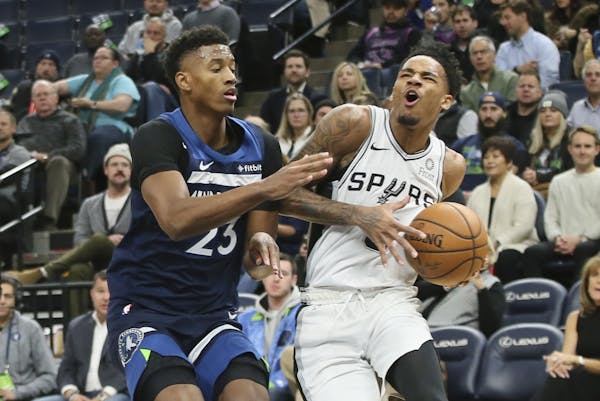The Timberwolves got some relief on the injury front Wednesday, with Jeff Teague returning to the lineup after a four-game absence because of an illness.
Teague did not start but he came off the bench, scoring 18 points on 6-for-10 shooting and collecting six assists in 23 minutes.
"We're glad to have Jeff back," coach Ryan Saunders said. "We always want a full complement of players available, but sometimes when guys are out, you're able to find other things about different individuals, but also about your team."
Saunders was referring to Andrew Wiggins' ability to run the offense. With Teague out, Wiggins made sure the Wolves didn't miss a beat — he averaged 32 points and 5.8 assists over that stretch. Teague said his main focus was to be a facilitator in his first game back, with Wiggins a focal point.
"Just try to get Andrew the ball," Teague said. "He's been effective these last couple of games. Just begin aggressive and try to play through him."
Saunders said the Wolves missed Teague in the fourth quarter of close games as someone who could set the tone for the offense late in close games.
"Having a natural point guard sometimes does help in terms of getting into the offense and slowing us down … " Saunders said. "[With] maybe 1:15 on the clock in the fourth quarter when you have a nine-point lead, maybe you're not going to take an early three. A lot of times a natural point guard can get you into something."
Jordan Bell (shoulder strain) and Shabazz Napier (hamstring strain) remained out for the fifth consecutive game and the Wolves sent Jordan McLaughlin back to Iowa.
Midrange rovers
The Wolves have been trying to eliminate the midrange jumper from the arsenal in the first year of the Gersson Rosas-Saunders regime.
On the opposite sideline Wednesday night was the Spurs, whose top two scorers shoot a heavy volume of midrange shots.
The Spurs came into the night leading the league in midrange attempts with 25.2 per game. That was 5.3 more than the second-highest team, Indiana.
Both DeMar DeRozan and LaMarcus Aldridge take their fair share from that distance, defined as anything between the three-point line and the paint. In fact, both ranked in the top three of midrange attempts.
DeRozan is first at seven attempts per game, hitting 47% of those, according to NBA.com. Aldridge is third overall, and he shoots 6.5 midrange attempts per game and connects on 43%.
Saunders would prefer that teams shoot long twos against the Wolves, but it's not as if they were just going to let the Spurs shoot wide-open from there.
"I mean, we ultimately you don't want teams to take any shots, that's the best defense," Saunders said. "But we understand that's not going to be possible. We want to make sure that the shots that they do … we're still getting contests. Just because it's a shot that we say we will typically give up before we give up a rim two or three, doesn't mean it's a good uncontested shot."
Quarterback of the future? This Vikings mystery is about to end.

Wolves vs. Suns: Here are the match-ups . . . and a series prediction

